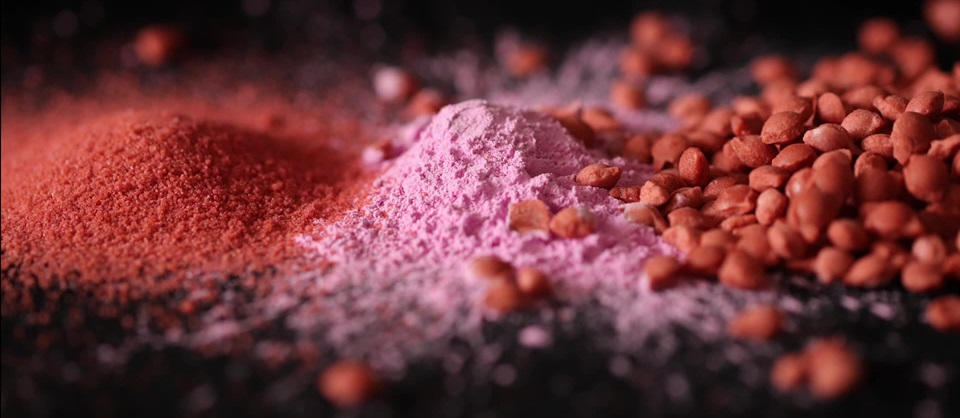Plastic, Rubber
Do you have questions?
We unleash your business potential by maximize the business innovation.
Send EmailCobalt sulfate anhydrous, Cobalt sulfate,cobaltous sulfate Cobalt, CoSO4, 10124-43-3 , 10393-49-4
Cobalt sulfate anhydrous
CAS: 10124-43-3;10393-49-4
Molecular Formula: CoO4S
Names and Identifiers
| Name | Cobalt sulfate anhydrous |
| Synonyms | CoSO4 Cobalt sulfate Cobalt(II) sulfate Cobalt (2+) sulfate cobaltsulfate(coso4) cobaltous sulfate Cobalt Cobalt sulfate anhydrous |
| CAS | 10124-43-3 10393-49-4 |
| EINECS | 233-334-2 |
| InChI | InChI=1/H2O4S/c1-5(2,3)4/h(H2,1,2,3,4)/p-2 |
Physico-chemical Properties
| Molecular Formula | CoO4S |
| Molar Mass | 155 |
| Density | d425 3.71 |
| Melting Point | decomposes at 1140℃ [JAN85] |
| Boling Point | 330°C at 760 mmHg |
| Water Solubility | dissolves slowly in boiling H2O [MER06]; g/100g solution H2O: 19.7 ± 0.1 (0°C), 27.2 ± 0.1 (25°C), 27.8 (100°C); solid phase, CoSO4 · 7H2O (0°C, 25°C), CoSO4 ·H2O (100°C) [KRU93] |
| Solubility | H2O: soluble |
| Vapor Presure | 0Pa at 20℃ |
| Appearance | red orthorhombic crystals |
| Merck | 13,2473 |
| Physical and Chemical Properties | Brown-yellow red crystals, soluble in water and methanol, ethanol-soluble, easy weathering in the air. cobalt sulfate is widely used as a desiccant for electroplating, ceramic colorants, inks and paints. Animal experiments have confirmed that cobalt sulfate can cause adrenal tumors and lung tumors. On World Health Organization (WHO), the International Agency for Research on Cancer published a preliminary list of carcinogens reference, Cobalt sulfate and other soluble cobalt (II) salts in the 2B list of carcinogens. |
| Use | For the electroplating industry and glaze coloring |
Risk and Safety
| Risk Codes | R49 - May cause cancer by inhalation R42/43 - May cause sensitization by inhalation and skin contact. R51/53 - Toxic to aquatic organisms, may cause long-term adverse effects in the aquatic environment. R50/53 - Very toxic to aquatic organisms, may cause long-term adverse effects in the aquatic environment. R22 - Harmful if swallowed R68 - Possible risk of irreversible effects R60 - May impair fertility |
| Safety Description | S53 - Avoid exposure - obtain special instructions before use. S23 - Do not breathe vapour. S36/37 - Wear suitable protective clothing and gloves. S45 - In case of accident or if you feel unwell, seek medical advice immediately (show the label whenever possible.) S61 - Avoid release to the environment. Refer to special instructions / safety data sheets. S60 - This material and its container must be disposed of as hazardous waste. S22 - Do not breathe dust. |
| UN IDs | UN 3082 9/PG 3 |
| WGK Germany | 2 |
Reference Information
toxic sulfur oxides and cobalt-containing compounds
| Application | cobalt sulfate is used in ceramic glaze and paint drying agent, also used in electroplating, alkaline batteries, production of cobalt-containing pigments and other cobalt products, also used in catalysts, Analytical reagents, feed additives, tire adhesives, Lithopone additives. for electroplating industry and glaze coloring |
| solubility in water (g/100ml) | grams dissolved per 100ml of water at different temperatures (℃): 25.5g/0 ℃;30.5g/10 ℃;36.1g/20 ℃;42g/30 ℃;48.8g/40 ℃; 55g/60 ℃;53.8g/80 ℃;45.3g/90 ℃;38.9g/100 ℃ |
| production method | preparation method the hydrated cobalt sulfate CoSO4 · 7H2O is first heated at a temperature of about 100 ℃ for 1H, the temperature was then raised to 250-350 °c and heating was continued to completely dehydrate the Anhydrous cobalt sulfate. |
| category | toxic substances |
| toxicity grade | high toxicity |
| Acute toxicity | oral-rat LD50 424 mg/kg |
| flammability hazard characteristics | non-combustible; |
| storage and transportation characteristics | The warehouse is low temperature, ventilated and dry, and stored separately from food raw materials |
| extinguishing agent | water, carbon dioxide, dry powder, sand |



